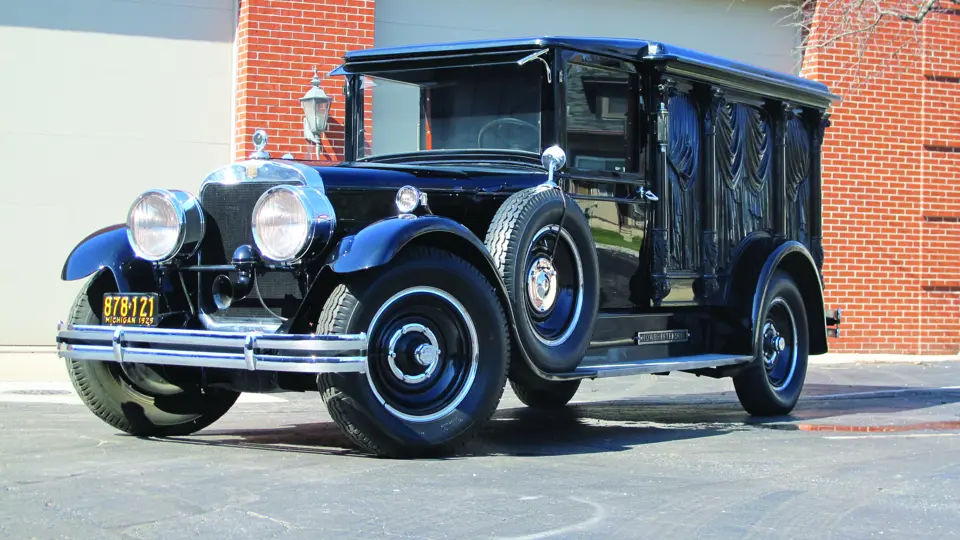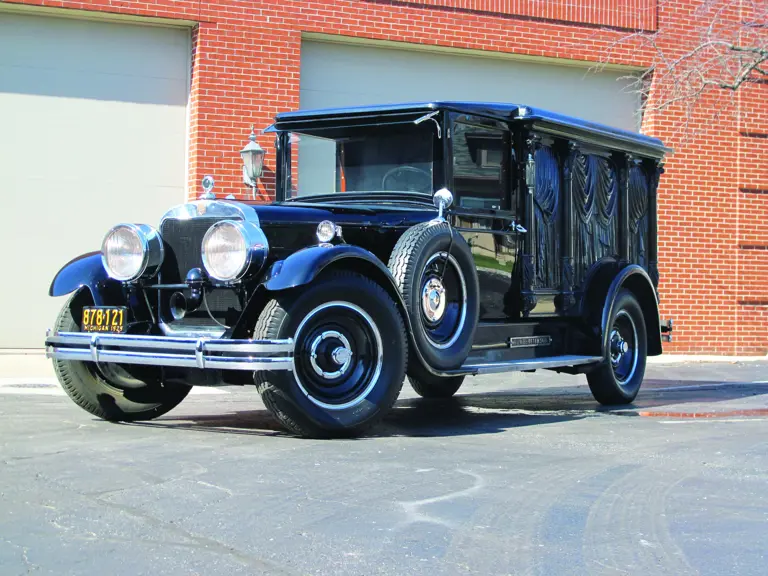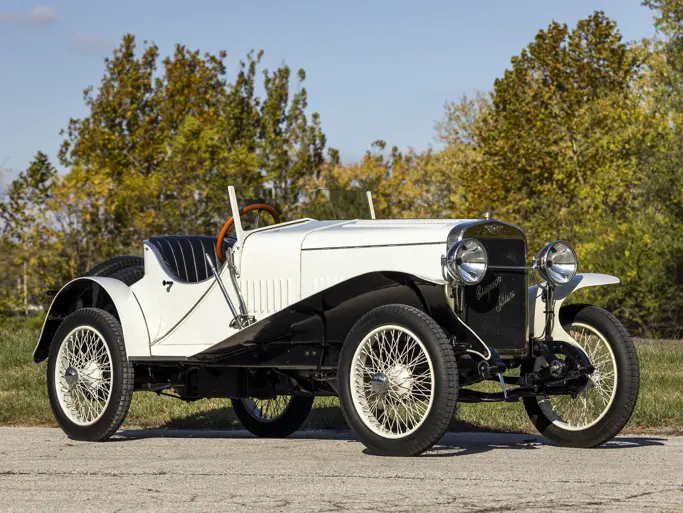
1929 Cunningham V-8 33286
{{lr.item.text}}
$137,500 USD | Sold
{{bidding.lot.reserveStatusFormatted}}
- 442-cid, 45-hp V-8 engine
- Manual transmission
- Three generations of ownership
- Impressive and rare Cunningham platform
- Beautiful wood carvings & interior workmanship
- Many Classic-era adornments
- Many awards and showings
- At times displayed in the Henry Ford Museum
- Accompanied by a file of ownership
- Reported only 5,600 Cunninghams built
- Registry reported to list approximately 100 survivors
Please note this vehicle is being sold title in transit
Cunningham of Rochester, New York was one of America’s leading producers of carriage vehicles and with the advent of the piston-driven automobile, they made a successful transition from the horse-drawn vehicle to the horseless carriage. Cunningham entered the market in earnest in 1907 and offered custom coachwork to order. By 1916 the company had its own 442-cid, 45-hp V-8 engine and in 1919, Indianapolis 500 winner (1915), Ralph DePalma drove a V-8 Cunningham special roadster 98-mph in a special six-mile speed trial at Sheepshead Bay.
However; it was not the Cunningham’s specifications, nor its performance (both described as meritorious), that distinguished the marque. It was, not surprisingly its excellently executed coachwork. During the World War I era and throughout the 1920s, Cunninghams were regarded as among the most handsome cars in America and most expensive as well, averaging $5,000, and reaching as high as $9,000. They are large vehicles and among the clientele in period were Mary Pickford, Harold Lloyd, William Randolph Hearst, Marshall Field, Phillip Wrigley, Fatty Arbuckle and Cecil B. De Mille. Following the Wall Street crash, Cunningham focused on the production of hearses and ambulances (otherwise known as Professional Cars), the business that had been its mainstay, practically from the beginning.
For many years, the finest and most expensive funeral car, ambulance or limousine an American funeral director could buy was the impressive Cunningham. This particularly fine example has been part of the Howe-Peterson Funeral Home, Dearborn’s oldest business (since 1873) and has been passed along for three generations of the Peterson family. It remains in fine mechanical condition and has been shown extensively throughout the Midwest. The business’ closure precipitates the sale.
The Peterson Cunningham hearse features the big 442-cid V-8 engine, but is immediately identified with its carved exterior carrier and the accompanying wood-paneled interior of the casket compartment, making for a classic hearse that is impressive both inside and out. Before the acquisition by this long-established Dearborn funeral home many years ago, the Cunningham served the Chicago area. The owner relates that this is “a beautiful vehicle. We really enjoy having our hearse on display for the public to see. We’ve taken it to shows across the region, but this show (2006 Greenfield Village Old Car Festival) is important to us since it’s our hometown crowd.
Among the other awards for this well-cared-for Cunningham is a Best of Show and first place awards at the Professional Car Society Show in Lima, Ohio, the Best of Show and Award of Excellence for commercial vehicles two years in a row at the St. Ignace auto show, Designer’s Choice Award at the Eyes on the Classics Show on the grounds of the Edsel Ford Estate on the shores of Lake St. Clair. The hearse remains operational and it has been on display at various times at the Greenfield Village Henry Ford Museum and other shows throughout metro Detroit.
Research indicates that only around 5,600 Cunninghams were built in total and that the serial number on this vehicle appears to be within 100 from the end of production. The Cunningham Registry is reported to show only 100 listed survivors. With long term caring of ownership and recognition, this Cunningham is ready to be further treasured in its next chapter.


 | Auburn, Indiana
| Auburn, Indiana


